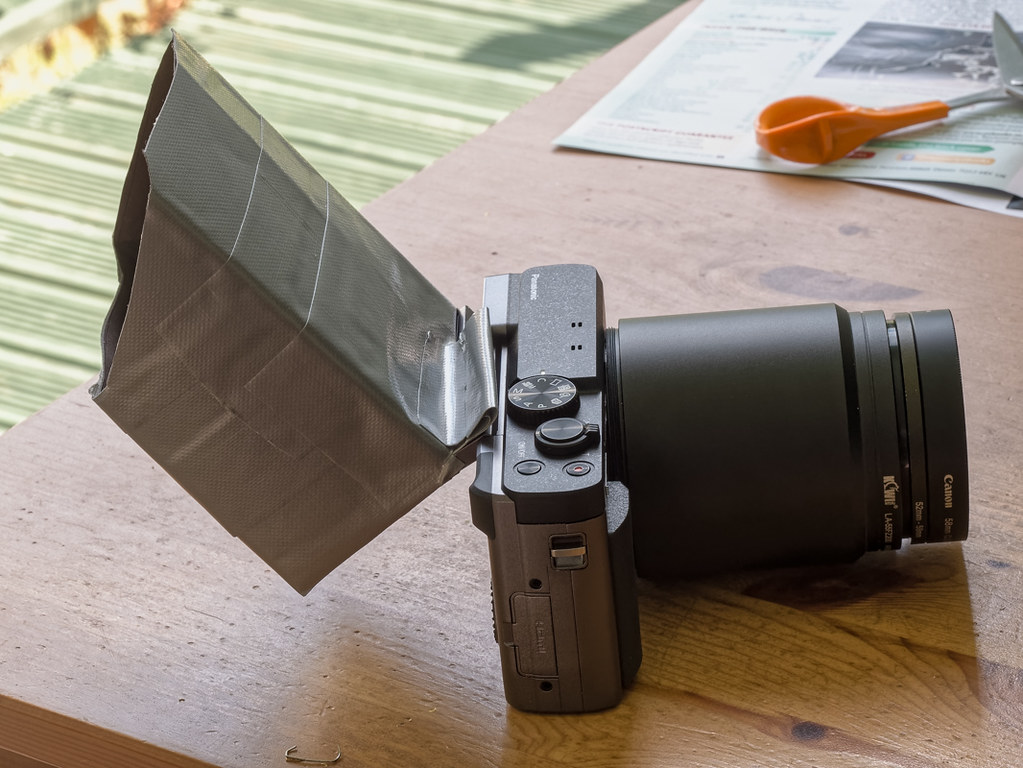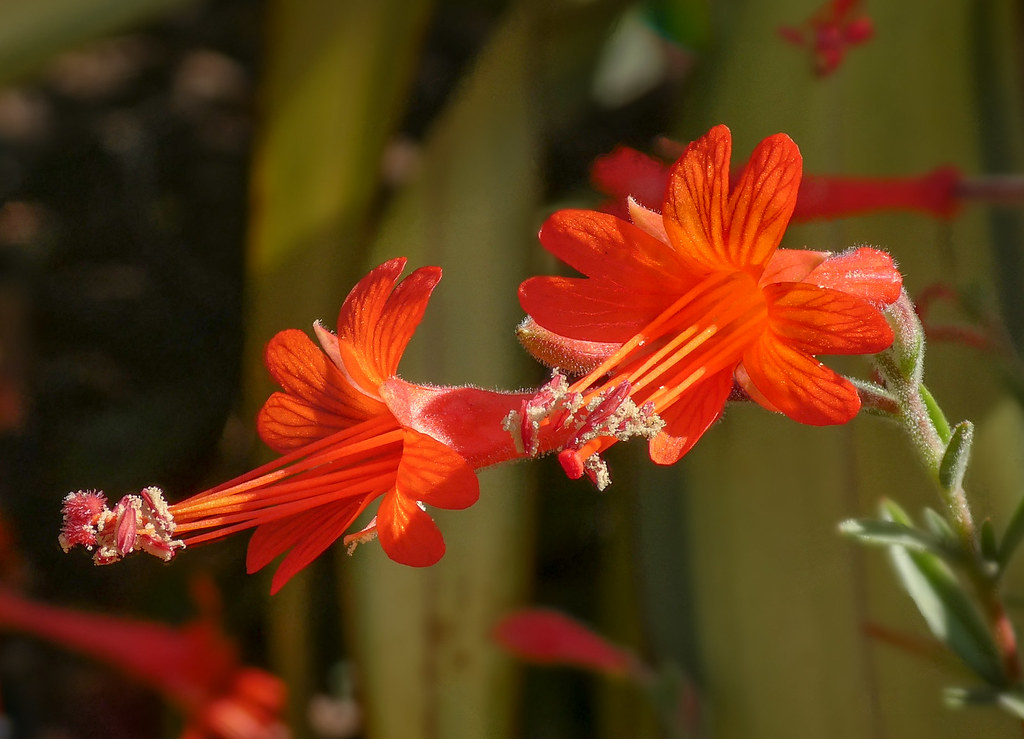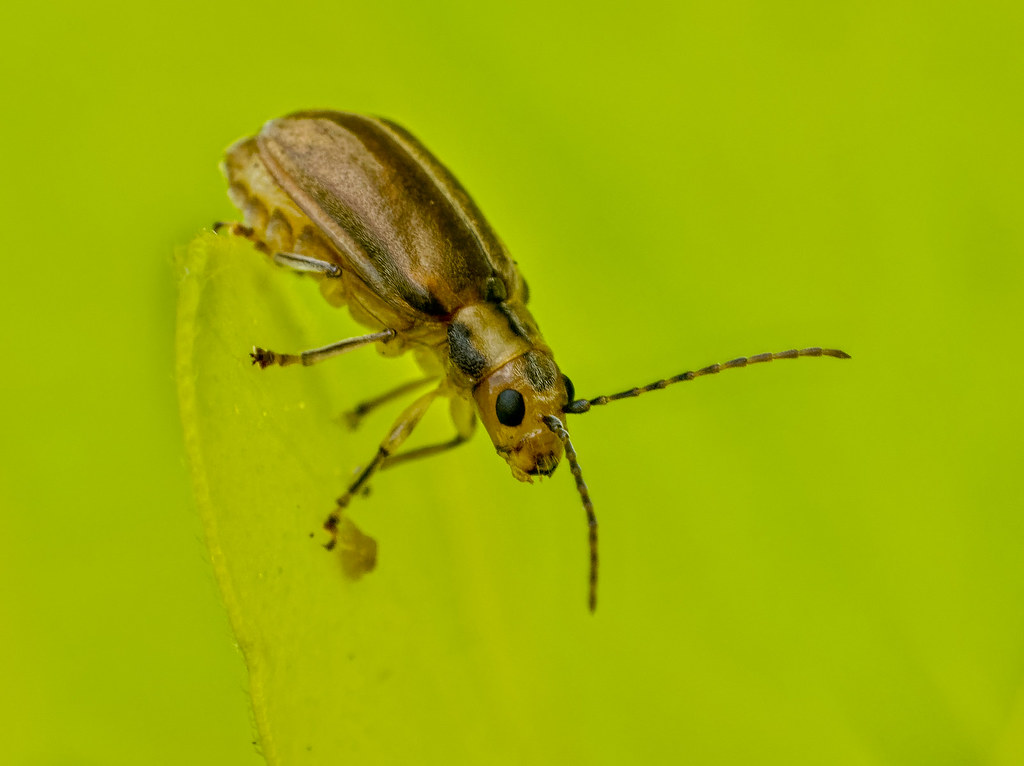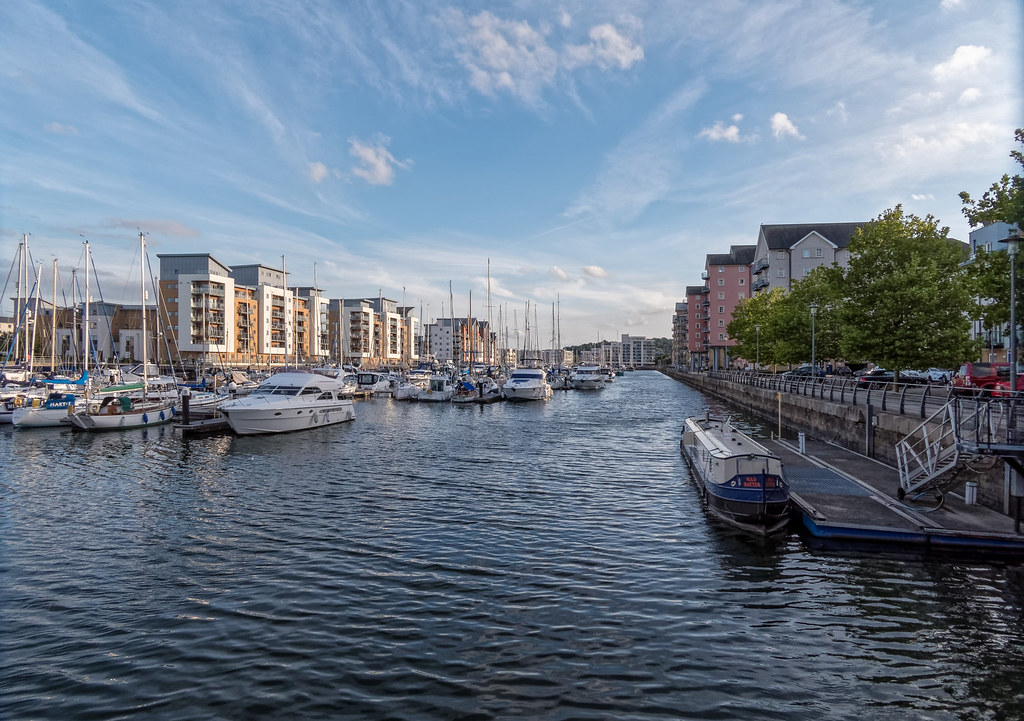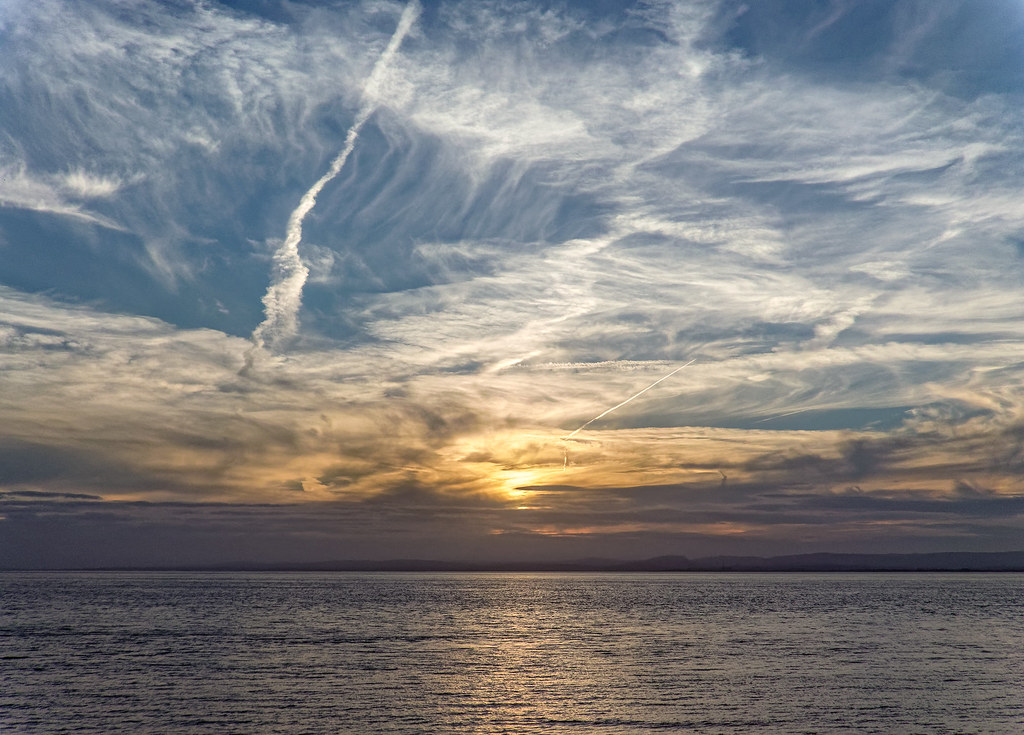GardenersHelper
In Memoriam
- Messages
- 6,344
- Name
- Nick
- Edit My Images
- Yes
Update 19 January 2018. Post 8 of 12. An unconventional combination of kit for small subjects?
I then discovered something curious.
For some time I have wanted to use a teleconverter with the 55-250 on my 70D. This would allow the same magnification from further away, or more magnification at the minimum focus distance. That could solve the "butterfly" problem. However, the 55-250 is an EF-S lens and you can only use teleconverters with EF lenses. You can fit an EF-S lens on to an extension tube. So if you fit a teleconverter to the camera, then fit an extension tube on to the teleconverter you can then attach an EF-S lens such as the 55-250. Unfortunately this severely limits the range over which you can gain focus. It isn't to do with using autofocus. Even with manual focus you simply can't gain focus apart from in the somewhat narrow range.
For some reason I tried it anyway. I fitted a 2X teleconverter to the camera, then a 10mm extension tube, then the 55-250 and then a Raynox 250.
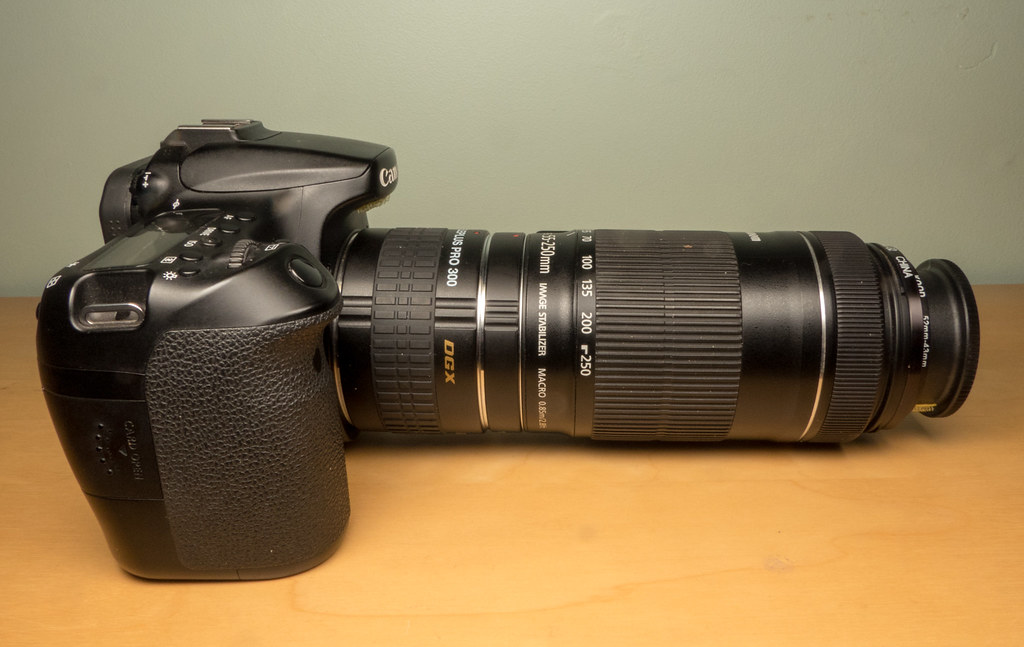
1279 01 70D small subject setup by gardenersassistant, on Flickr
At 55mm focal length the scene width was 18mm with a working distance of 75mm. My close-up setups give me a better working distance for this size of scene - over 100mm with the G5/G80 and over 180mm with the FZ330.
However, as I increased the focal length the magnification increased and the scene width decreased. No surprise there. But the working distance increased. By the time I got to the maximum focal length of 250mm the scene width was down to 5.5mm and the working distance was up to 115mm. This compares to about 45mm with the FZ330 (with a pair of Raynox 250s) and around 30mm with the G5/G80 (with a Raynox MSN 202).
Autofocus worked. (It also works at this scale on the G5/G80, but not the FZ330.) As is inevitably the case with the 70D when using live view, the focus point could not be placed with the same degree of accuracy as with the Panasonic cameras. That is because the focus area is much larger on the 70D than it is when using the smallest of the available focus areas on the Pansonics.
On a ruler test, which has high contrast black against cream edges, there was some fairly mild purple and green fringing. This could be almost completely removed in Lightroom (by using both the CA removal option and also the manual defringing option). There was stronger fringing with the G5/G80, which Lightroom could not remove. There was little or no fringing with the FZ330, but there was nothing in sharp focus either, even in the centre, and not far out from the centre everything became ... difficult to describe - horrible.
After my normal processing in DXO PhotoLab and Lightroom the 70D images showed better detail in the centre and and out towards the edges than the G5/G80.
In terms of usability, the 70D setup is larger and heavier than the FZ330 and G5/G80 setups. But the 55-250 is an EF-S lens and not as heavy as the Sigma 105 or the Meike 80mm (380g vs 740g for the Sigma 105). Also, like the Meike, the 55-250 has a significantly smaller diameter than the Sigma 105 and I find it quite comfortable to hold. The zoom and focus rings are fly by wire and easily turned.
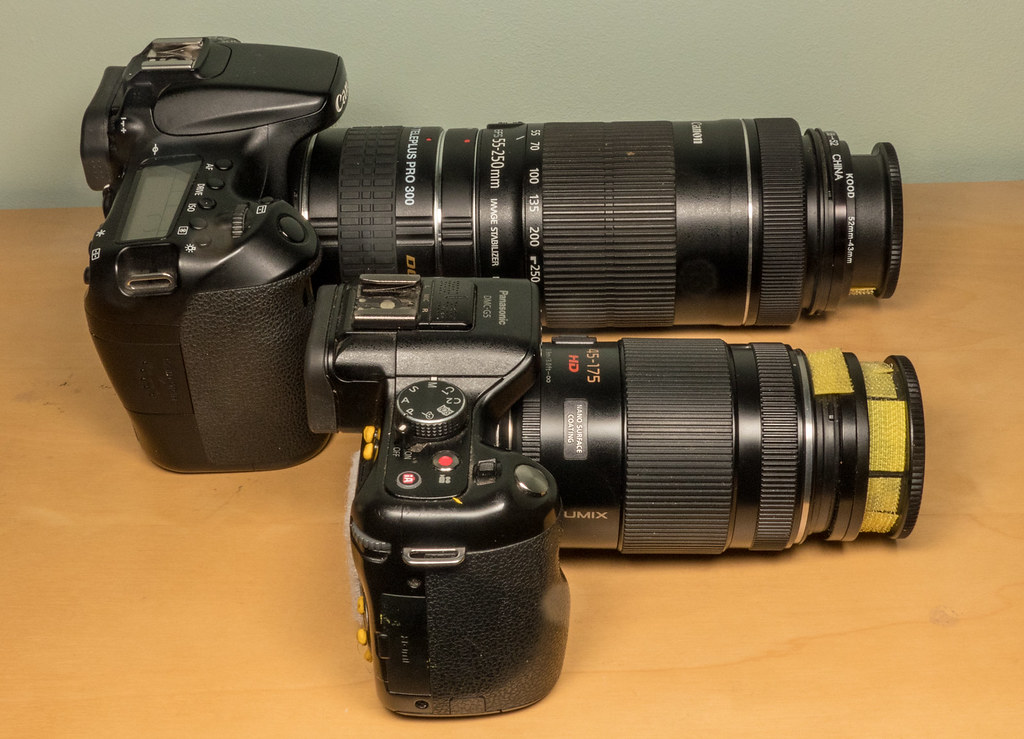
1279 02 70D small subject setup vs G5 setup by gardenersassistant, on Flickr
I also found that I could take the KX800 flash unit off of the FZ330 or G5/G80 and use it on the 70D without making any adjustments to the arms. Given how long the 70D setup was, especially with the 55-250 fully extended, I found that rather surprising.
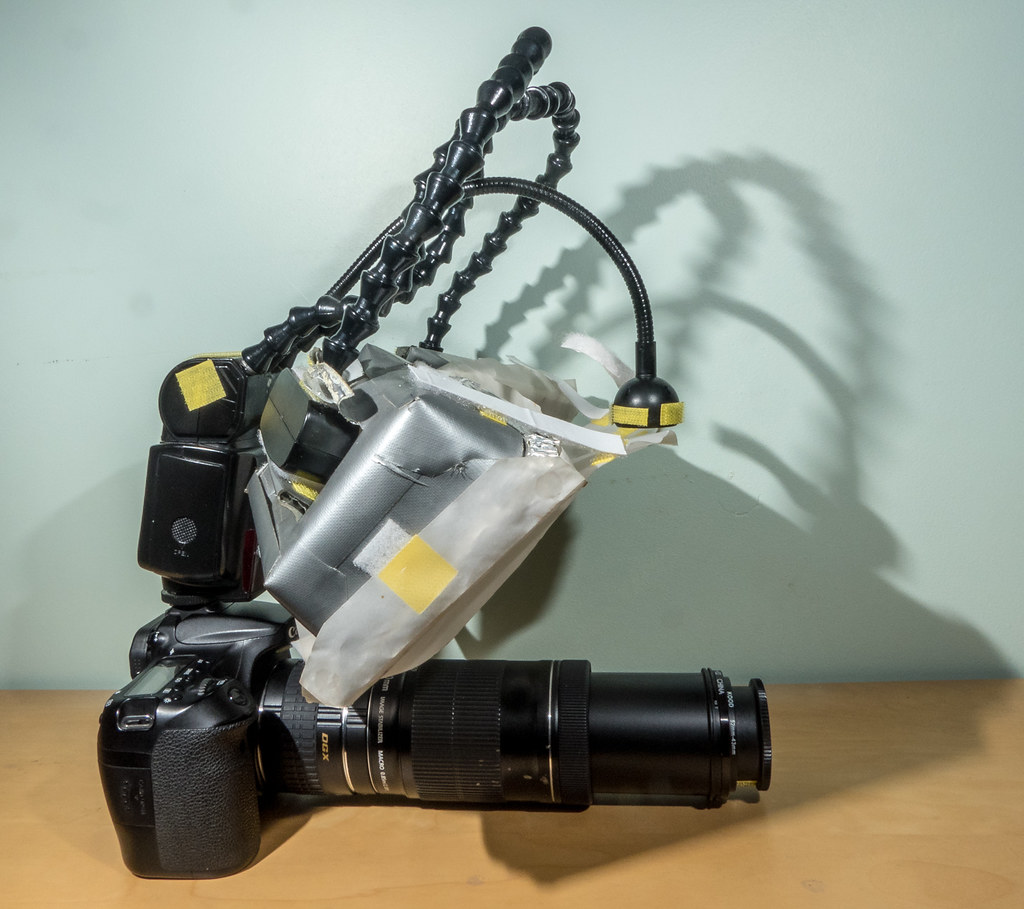
1279 03 70D small subject setup fully extended by gardenersassistant, on Flickr
I would not want to use this 70D setup at the lower magnifications it can cover because of the relatively short working distances, but for higher magnifications it looks definitely worth testing, as it may provide better working distances and better image quality than any of my other setups for the smallest scenes that I want to tackle in the field, and do so in a package that is as usable as anything else is likely to be at this sort of scene size.
Or there may be a gotcha lurking here somewhere. Only by testing in the field will I know one way or the other.
Continued in next post....
I then discovered something curious.
For some time I have wanted to use a teleconverter with the 55-250 on my 70D. This would allow the same magnification from further away, or more magnification at the minimum focus distance. That could solve the "butterfly" problem. However, the 55-250 is an EF-S lens and you can only use teleconverters with EF lenses. You can fit an EF-S lens on to an extension tube. So if you fit a teleconverter to the camera, then fit an extension tube on to the teleconverter you can then attach an EF-S lens such as the 55-250. Unfortunately this severely limits the range over which you can gain focus. It isn't to do with using autofocus. Even with manual focus you simply can't gain focus apart from in the somewhat narrow range.
For some reason I tried it anyway. I fitted a 2X teleconverter to the camera, then a 10mm extension tube, then the 55-250 and then a Raynox 250.

1279 01 70D small subject setup by gardenersassistant, on Flickr
At 55mm focal length the scene width was 18mm with a working distance of 75mm. My close-up setups give me a better working distance for this size of scene - over 100mm with the G5/G80 and over 180mm with the FZ330.
However, as I increased the focal length the magnification increased and the scene width decreased. No surprise there. But the working distance increased. By the time I got to the maximum focal length of 250mm the scene width was down to 5.5mm and the working distance was up to 115mm. This compares to about 45mm with the FZ330 (with a pair of Raynox 250s) and around 30mm with the G5/G80 (with a Raynox MSN 202).
Autofocus worked. (It also works at this scale on the G5/G80, but not the FZ330.) As is inevitably the case with the 70D when using live view, the focus point could not be placed with the same degree of accuracy as with the Panasonic cameras. That is because the focus area is much larger on the 70D than it is when using the smallest of the available focus areas on the Pansonics.
On a ruler test, which has high contrast black against cream edges, there was some fairly mild purple and green fringing. This could be almost completely removed in Lightroom (by using both the CA removal option and also the manual defringing option). There was stronger fringing with the G5/G80, which Lightroom could not remove. There was little or no fringing with the FZ330, but there was nothing in sharp focus either, even in the centre, and not far out from the centre everything became ... difficult to describe - horrible.
After my normal processing in DXO PhotoLab and Lightroom the 70D images showed better detail in the centre and and out towards the edges than the G5/G80.
In terms of usability, the 70D setup is larger and heavier than the FZ330 and G5/G80 setups. But the 55-250 is an EF-S lens and not as heavy as the Sigma 105 or the Meike 80mm (380g vs 740g for the Sigma 105). Also, like the Meike, the 55-250 has a significantly smaller diameter than the Sigma 105 and I find it quite comfortable to hold. The zoom and focus rings are fly by wire and easily turned.

1279 02 70D small subject setup vs G5 setup by gardenersassistant, on Flickr
I also found that I could take the KX800 flash unit off of the FZ330 or G5/G80 and use it on the 70D without making any adjustments to the arms. Given how long the 70D setup was, especially with the 55-250 fully extended, I found that rather surprising.

1279 03 70D small subject setup fully extended by gardenersassistant, on Flickr
I would not want to use this 70D setup at the lower magnifications it can cover because of the relatively short working distances, but for higher magnifications it looks definitely worth testing, as it may provide better working distances and better image quality than any of my other setups for the smallest scenes that I want to tackle in the field, and do so in a package that is as usable as anything else is likely to be at this sort of scene size.
Or there may be a gotcha lurking here somewhere. Only by testing in the field will I know one way or the other.
Continued in next post....
Last edited:


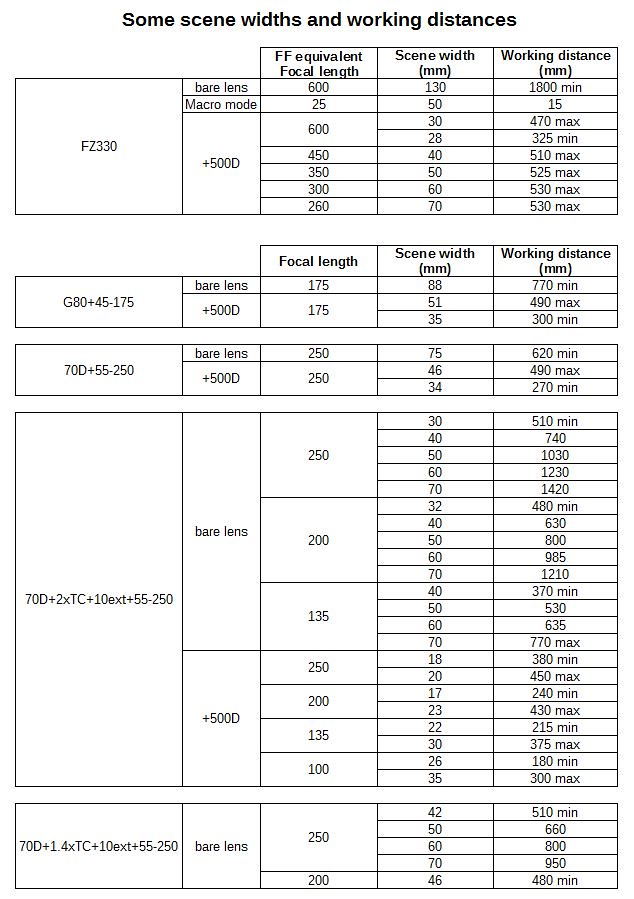


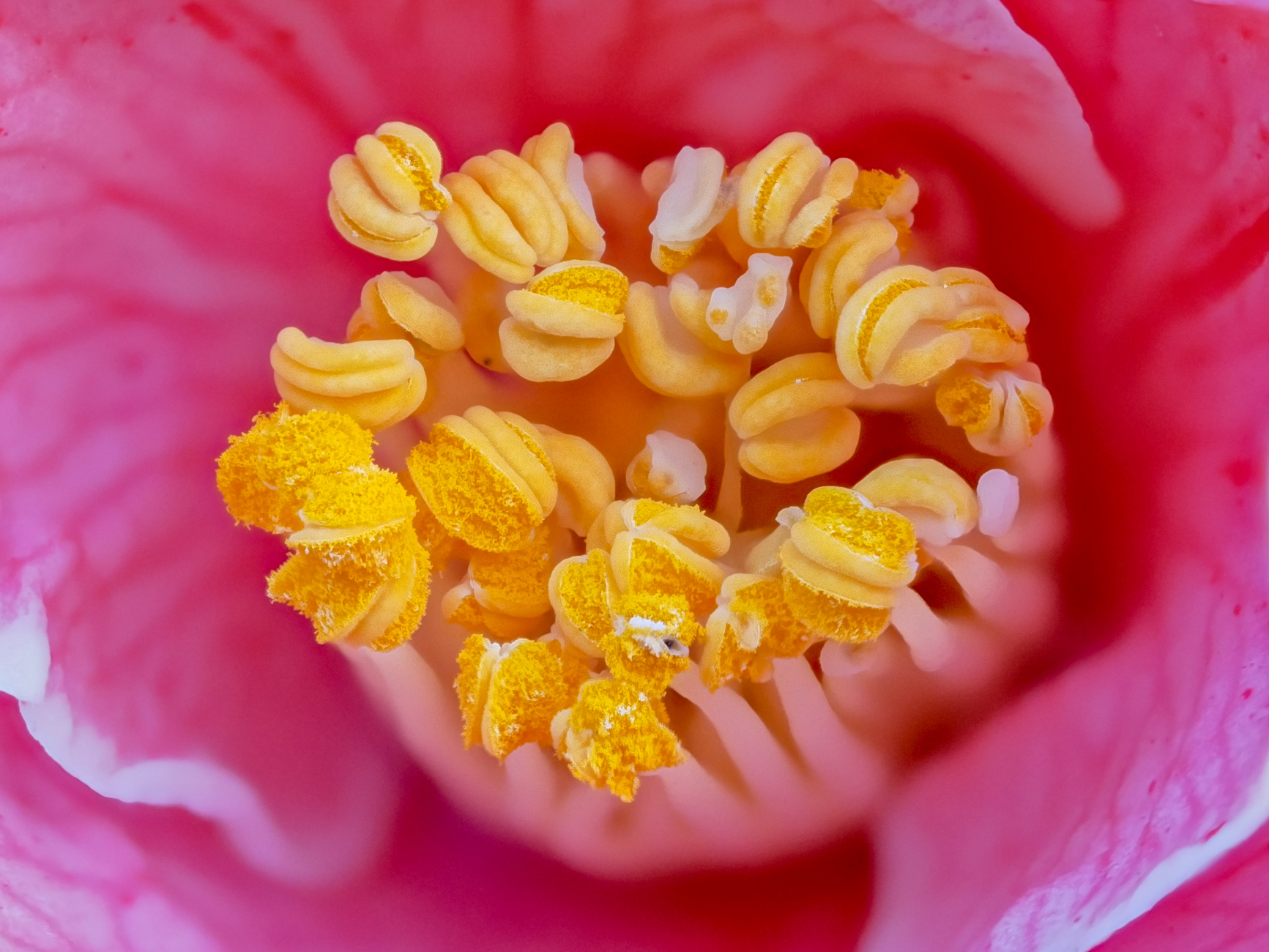
 Caterpillar IMG_0620
Caterpillar IMG_0620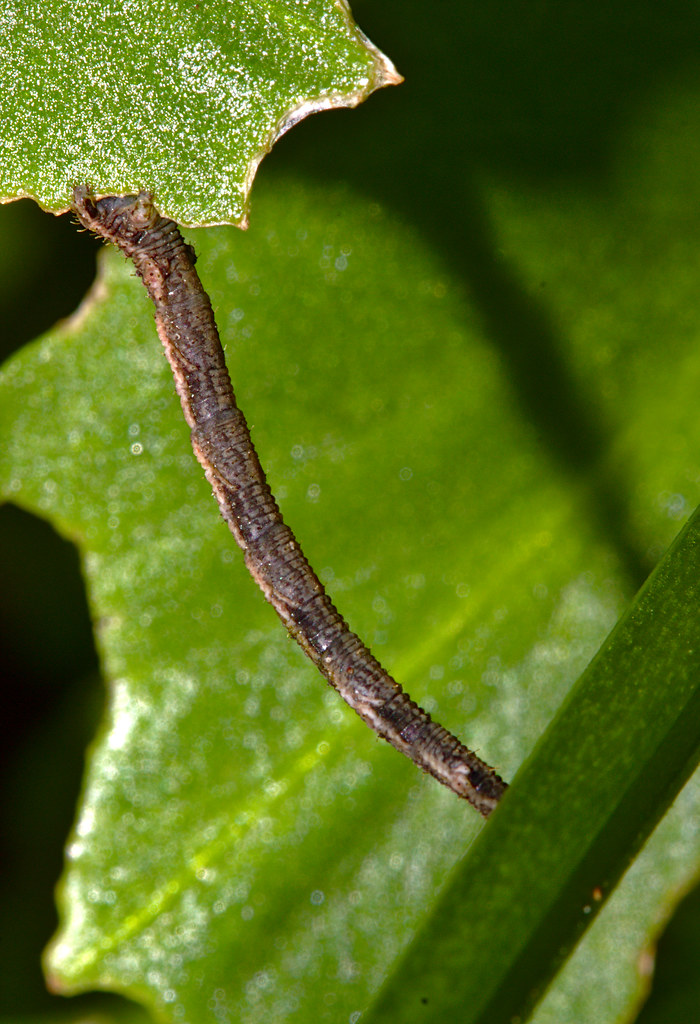 Caterpillar IMG_1159
Caterpillar IMG_1159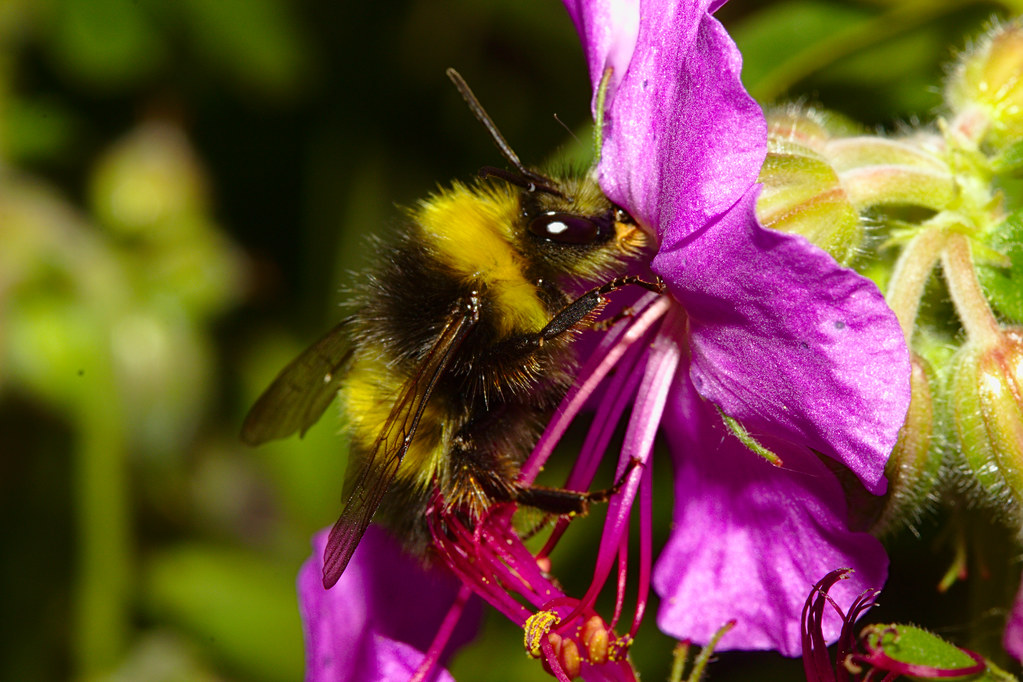 Bumblebe IMG_1157
Bumblebe IMG_1157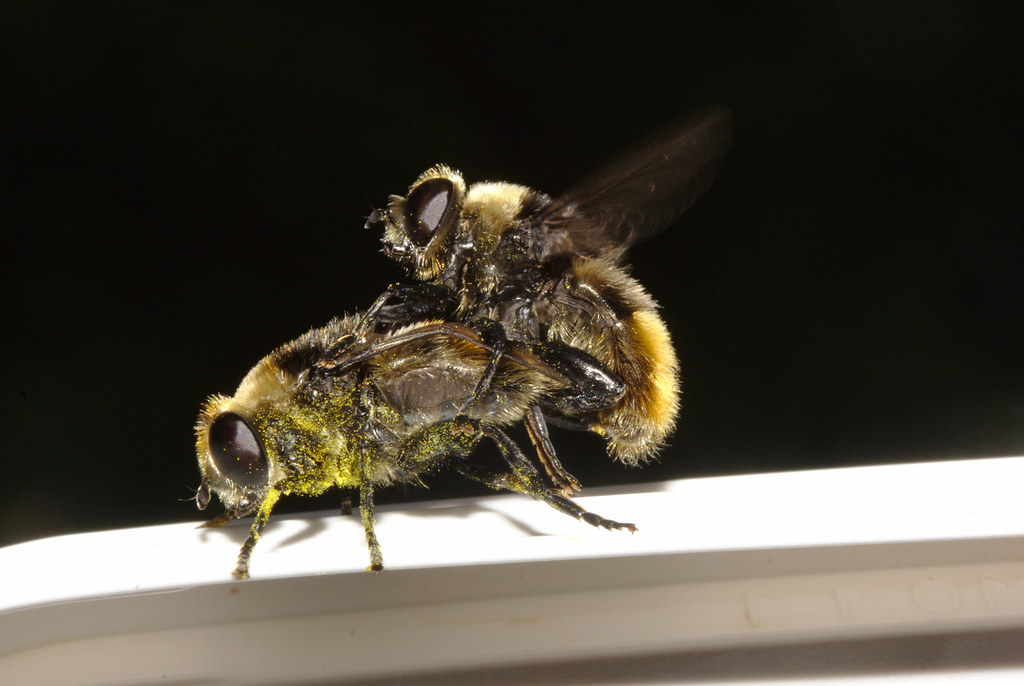 Hoverflies IMG_1218
Hoverflies IMG_1218